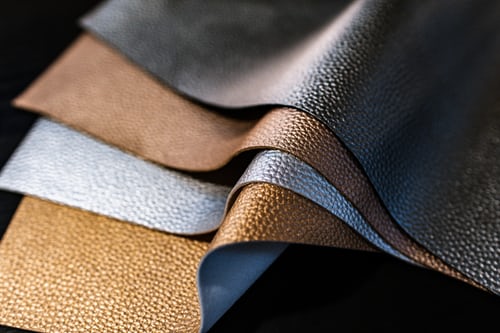Leather is a strong, flexible, and durable material that has been used for over thousands of years to produce various objects ranging from clothing and accessories to weapons and armour throughout human history. These qualities make leather a valuable material even today, as its properties are difficult to reproduce artificially and because it is relatively easy to make. Leather is made from the hides of animals, most commonly cattle, sheep, and goats although more expensive (due to the rarity) types of leather are made from the skins of alligators and seals. Leather is one of the outputs of the livestock industry and is one of the most profitable of its products due to the demand for leather. Leather is also linked with several other industries as it has commercial and industrial applications. Complementary products to leather products include products such as leather shoe cleaner, dyes, recycling services, etc. Since the production of leather necessarily requires the raising and slaughter of animals, it is both harmful to the environment and an industry that kills living beings. This article lists several alternatives to leather and their properties, along with why seeking alternatives is required.

As mentioned above, the leather industry is extremely unsustainable in terms of environmental practises due to the large amounts of waste and pollution it emits to the environment. It is also one of the largest and most inefficient uses of fresh water and land, while emitting a substantial amount of greenhouse gases to the atmosphere. The leather and meat industries are worse for the environment that the dairy industry as the slaughter of livestock requires that new livestock be raised to repeat the cycle, which is much more resource intensive than dairy production.
Rubber
Although the production of rubber is not exactly sustainable in the current practise, it is far better than the livestock industry. It also shares several properties with leather which allows rubber to be used as a substitute in most manufactured products which use leather. Rubber is durable and can be recycled which makes the product lifecycle longer. Rubber can be extracted from trees or produced synthetically.

Plant-Based Leather
Although plant-based leathers are still a subject of research, a few varieties are commercially available. Plant-based leather can be considered the best alternative as they do not require any petroleum or animal products. The plant-based leathers currently commercially available are produced from Pineapple leaf (Piñatex), mushroom (Muskin, Mylo, and Mycoworks), and Apple. Of these, Piñatexand Apple requires a synthetic coating whereas the mushroom-based alternatives are completely animal and synthetic material-free. The apple leather has a similar appearance to leather but has a paper-y texture which accommodates various backings and coatings allowing for more aesthetic leather products.
Regardless of the availability of alternatives, the practise of consuming less, and buying only what you need contributes much more towards sustainability. Increasing the lifecycle of leather products by cleaning, and repairing them when necessary, as opposed to replacing them with a newer product is both financially and environmentally responsible.


